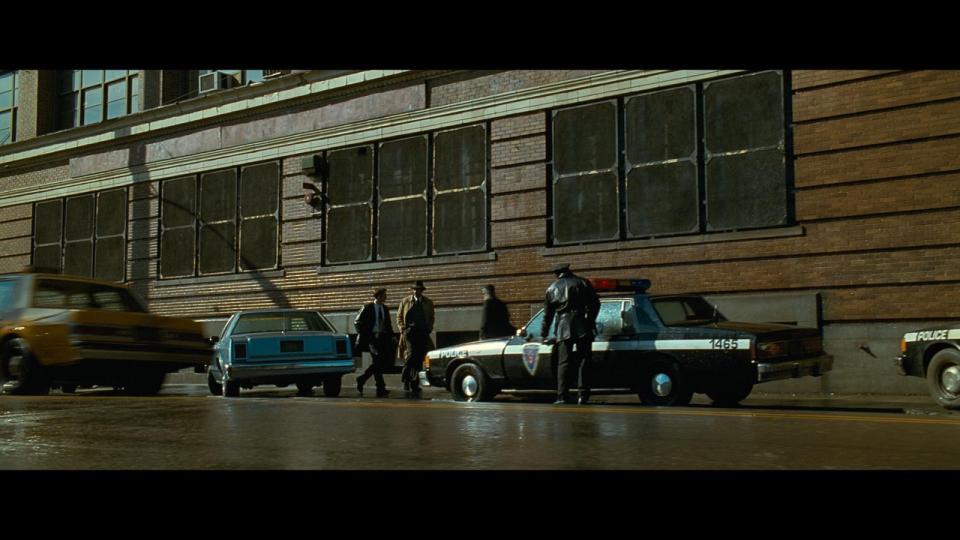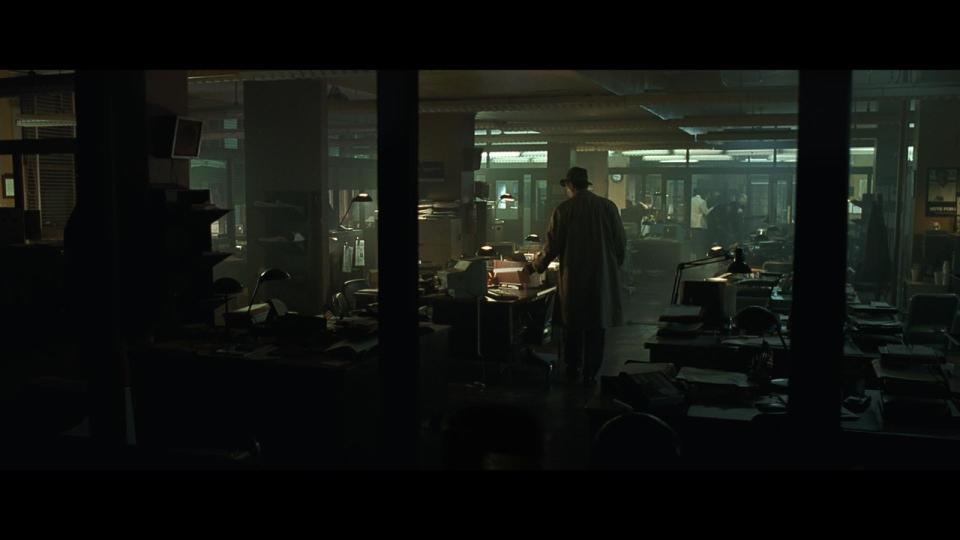For ‘Seven’ Restoration, David Fincher Went Back and ‘Kissed in Some of the City’

David Fincher is a philosopher as well as a perfectionist. When asked about the significance of his 8K remastering of “Seven” (premiering April 19 at the Chinese IMAX in 4K as part of the TCM Classic Film Festival), he told IndieWire, “If you think of it in string theory, it’s like a volumetric capture of where all these careers were at, and what these people wanted and needed and infused the thing with.”
Fincher was referring, of course, to Morgan Freeman, Brad Pitt, Gwyneth Paltrow, Kevin Spacey, and the rest of the cast and crew who made his breakout 1995 serial killer neo-noir. The film was a brilliant analog product of the era (with only seven weeks of prep) but also ahead of its time in conveying a dark, creepy, nihilistic police procedural that got under our skin like no other film (select release prints even underwent a bleach bypass, silver retention process that provided greater color density and black levels).
More from IndieWire
Ryan Gosling: 'Angry Birds' Box Office Success 'Destroyed' Chances of 'The Nice Guys' Sequel
Jane Campion to Receive Locarno Film Festival's Pardo d'Onore Manor
“It is what it is, warts and all,” Fincher said. “And some of it is spectacular and some of it is stuff that I would change or fix today, but I didn’t want to mess with that. There’s a lot of imperfections, there’s a lot of things that you just don’t see on film. When people say they love the look of film, what they’re talking about is chaos, entropy, and softness. Now, of course, we live in an HDR world where you get those kinds of very deep, rich, velvety blacks for free.
“And we had to negotiate that fine line between what to fix or not,” Fincher continued. “So we attempted to go back in and fix to make it match. And kind of repaint stuff and just take out water spots and little edge flashes. And some of it is impossible to get it to match, certainly by today’s standards. So there was a lot of excavation. I didn’t realize it would take as long as it did, at least six months dealing with files and making notes, and maybe the last nine months to a year putting some of it on the back burner while we finished ‘The Killer’ and did initial work on ‘Panic Room,’ which is what we’re working on now.”

“Seven” was scanned by Warner Bros.’ Motion Picture Imaging from the original camera negative and mastered in 8K by Peter Mavromates, head of Fincher’s post team. All color corrections, retouches, and VFX were also rendered in 8K. However, because there is currently no distribution chain for 8K, it was downsampled to 4K. There will be an upcoming 4K Blu-ray release of “Seven” through Warner Bros.
“Seven” was filmed in downtown L.A., mostly in the rain, by cinematographer Darius Khondji. He shot in Super 35 with Panavision cameras and Primo spherical lenses in 2.39. He used a combination of Steadicam and hand-held shots, creating a modern yet scary aesthetic in consultation with Fincher. For interiors, he utilized toplighting and Chinese lanterns for a soft, gritty, moist look.
“Darius Khondji used to change film stocks in the middle of the scene, depending on how contrasty he wanted the coverage to be,” Fincher added. “And it all kind of mushed together in the world of Kodak and Deluxe. And he had a 35mm hand-held camera for a lot of the chase stuff, which was very effective…but it was a film scratcher and film shredder.” Now that’s been fixed to create more consistency.
Back in 1995, it was also completely acceptable to have a window that was de-maxed and became a soft light for the scene or to have background cityscapes with rushed matte paintings in windows. But Fincher claimed that unfinished work wouldn’t fly today, so they had to “go back in and kiss in some of the city.”

“It’s pretty subtle but there’s now detail there,” Mavromates told IndieWire. “Now you can see it more clearly, and then there’s a lot of things that just bothered him that wasn’t quite to the level he wanted.”
In fact, the lack of visual control that Fincher displayed on “Seven” was responsible for his current reputation as a perfectionist. “One of the things that stands out in the way David makes his movies today is that he spends a lot of time working on and perfecting camera movement,” Mavromates explained. “And this is something that he could not do with ‘Seven’ back then. So what you see here sometimes is some of those little bumps in camera moves that are in the original movie are now gone.”
Then there was the annoying flyaway hair that suddenly appeared on Paltrow’s face during that intimate diner scene with Freeman. “You couldn’t even see in the film version that it cuts right through Gwyneth’s eye,” Fincher said. “And I don’t think I’ve ever seen it in 1080p. But in 4K you can definitely see it, and we had to take that thing out because it was too distracting.”
Mavromates worked with IMAX on the conversion of “Seven” to make it look good on their enormous screen. However, Fincher insisted on keeping the film’s original 2.39 aspect ratio rather than conforming to IMAX’s taller framing. The director and Mavromates also decided to skip IMAX’s grain management system since they had already run “Seven” through their own, and IMAX agreed that it was unnecessary.
Fincher was pleased with how it looks in IMAX, even though it’s not his preferred format: “This is going to be on that huge screen, which is another interesting thing,” he said. “These are closeups that I would probably today never frame so tight.”
Overall, though, the director admitted that he hasn’t revisited “Seven” in a very long time: “I mean, some stuff snuck up on me,” he said. “There were definitely moments that these were different creatures back then. I can’t imagine the movie without Morgan.”
Best of IndieWire
The 10 Best Teen Rebellion Films: 'Pump Up the Volume,' 'Heathers,' and More
The 28 Best True Crime Shows Streaming Now, from 'Under the Bridge' to 'The Vow'
The 10 Best Doppelganger Films, from 'Dead Ringers' to 'Vertigo'
Sign up for Indiewire's Newsletter. For the latest news, follow us on Facebook, Twitter, and Instagram.

 Yahoo News
Yahoo News 
